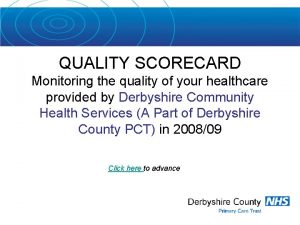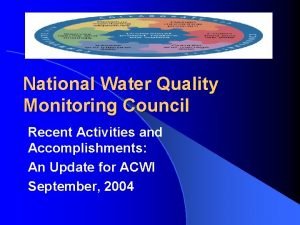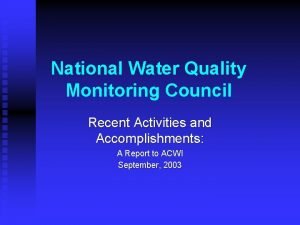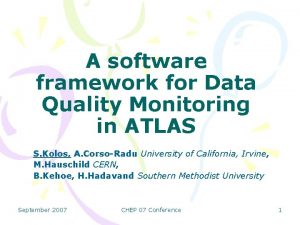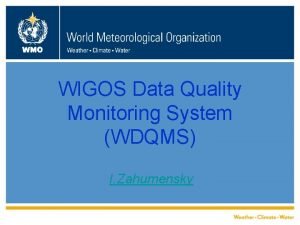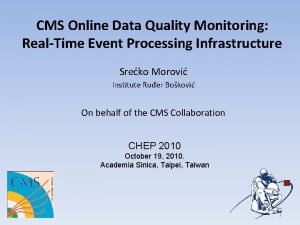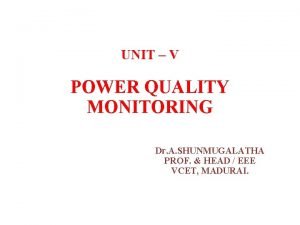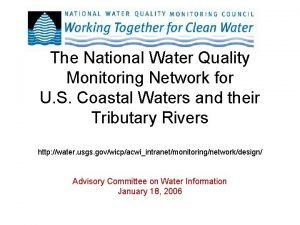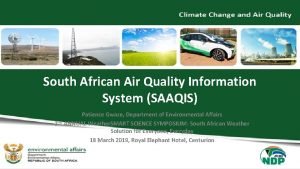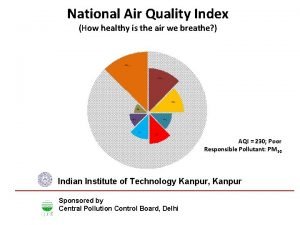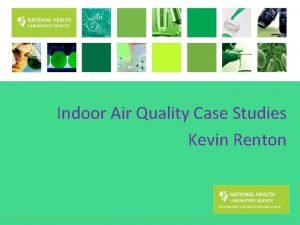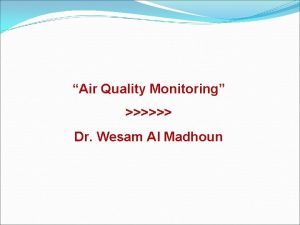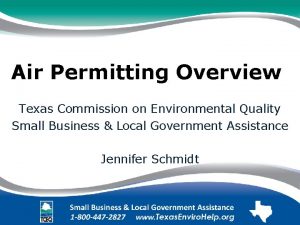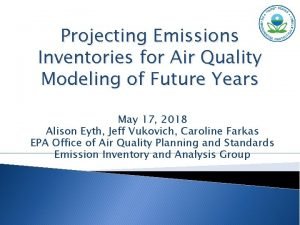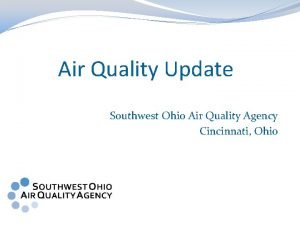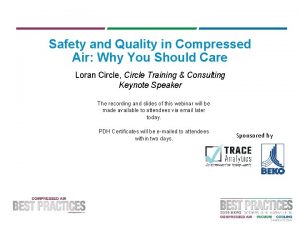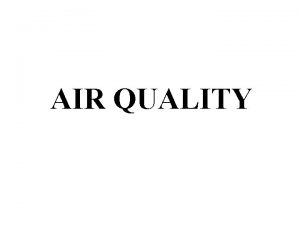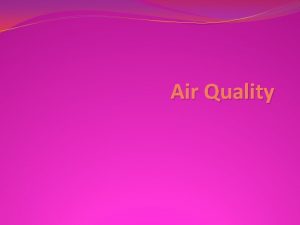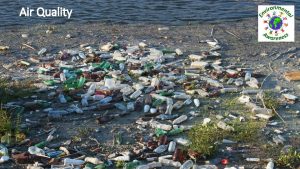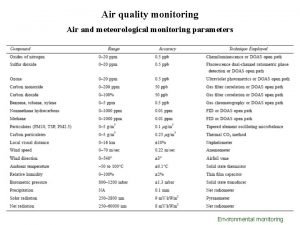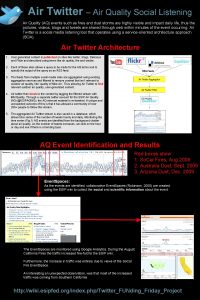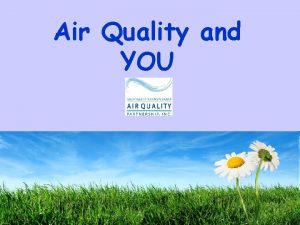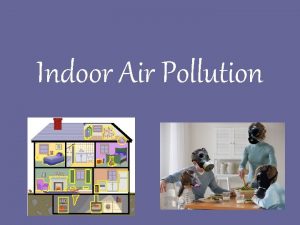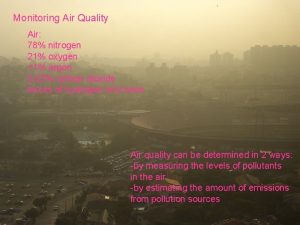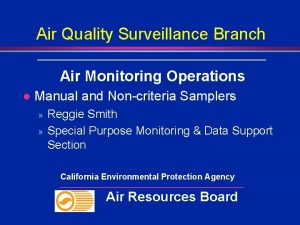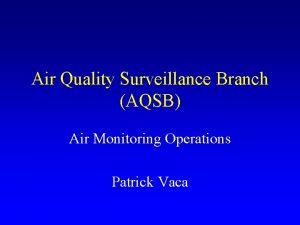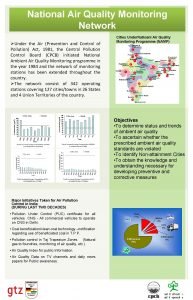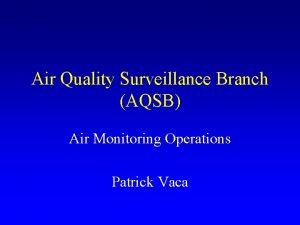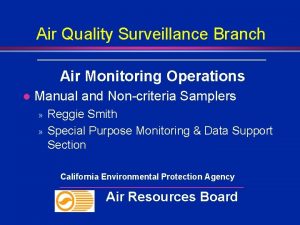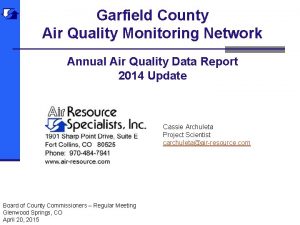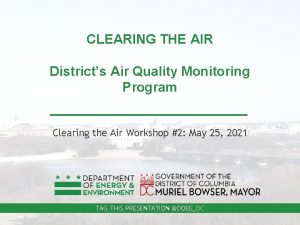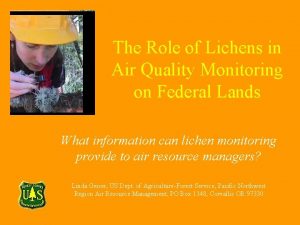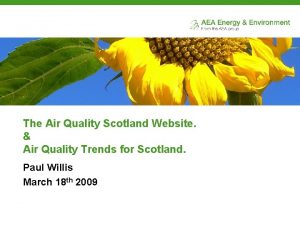SOCAAR The Role of Air Quality Monitoring in
































- Slides: 32

SOCAAR The Role of Air Quality Monitoring in Policy Development and Evaluation Prof Greg Evans, Ph. D, P. Eng, FCAE Annual Meeting June 4, 2015 1 1

Chengdu (January 2013) SOCAAR 2 Photo by YL Cheng 2

Athens (January 2013) SOCAAR 3 Photo from Antonis Batsos 3

Singapore (June 2013) SOCAAR 4 Reuters June 19 2013 4

Beijing (January 2013) SOCAAR 5 Photo from Bill Bishop/Sinocism China Newsletter 5

Overview of presentation SOCAAR • A brief history of air pollution • Illustrative Cases – Coal in Ontario – Biomass in Montreal – Traffic Pollution • Exposome: personalised health • Summary 6

Air Quality and Health: Mortality SOCAAR London Smog Episode Dec 1952 7

Air Quality and Health: Atherosclerosis SOCAAR Kunzli et al Env. Health Perspec 2005 8

Aerosol Particles: Size Matters SOCAAR nm μm mm Ultrafine < 100 nm Fine or PM 2. 5 < 2. 5 μm PM 10 < 10 μm Adapted from Brook R et. al Circulation 2005 9 9

So what are these particles? Young Particle Older Particle SOCAAR 260 nm 1 µm College Street June 2013 10 10

Good News: Health gains from reduced PM 2. 5 in 51 cities SOCAAR 11 Matched particulate concentrations and life expectancy data for two periods (1979 -1983 and 1999 -2000) in 51 cities A 10 µg m-3 particulate decrease in was associated with a 7. 3 month increase in life expectancy. Pope et al NEJM 2009 11

Bad News: Global Burden of PM 2. 5 Exposure SOCAAR PM 2. 5 2 to 3 million deaths per year Cardiopulmonary disease 8% (5. 5 -10. 5) Lung Cancer 12. 8% (5. 9 -18. 5) Heart Disease 9. 4% (6. 6 -11. 8) 12 Env Res (120), 2013 12

Case 1: Improved Air Quality in Toronto 35 25 PM 2. 5 (µg/m 3) SOCAAR 30 Pre-recession Coal phase out Post-recession 20 15 10 5 Mean ± SE 0 Jan-03 Jan-04 Jan-05 Jan-06 Jan-07 Jan-08 Jan-09 Jan-10 Jan-11 Jan-12 Jan-13 13 13

Identifying Sources with Receptor Modelling Primary Emissions Receptor Site Atmospheric Transport SOCAAR Atmospheric Processing Measurements at site Identify factors, their contributions Correlate temporal trends of components Al Ca TIME 14 14

Toronto: Why has PM 2. 5 decreased? Coal Combustion SOCAAR 2007 12. 4 µg/m 3 2013 8. 8 µg/m 3

Sulphate factor and SO 2 emissions SOCAAR 16

Case 2: Wood Burning in Montreal SOCAAR In Winter • Toronto 0. 7 ± 0. 4 µg/m 3 (7% of PM 2. 5) • Edmonton 1. 4 ± 1. 3 µg/m 3 (13%) • Montreal 1. 6 ± 1. 4 µg/m 3 (16%) 17

Policy interventions are improving air quality PM 2. 5 from wood burning SOCAAR Banning the new installation of woodburning stoves or fireplaces Woodstove Replacement Program Winter 2009 -2010: 2. 1 ± 0. 9 µg/m 3 Winter 2013 -2014: 1. 2 ± 0. 4 µg/m 3 Decreased by ~ 40% since 2009 -2010 18

Case 3: Traffic Related Air Pollution Near Major Roads SOCAAR Ultrafine particles 19 Jeong et al APR March 2015 19

Population Living Near a Major Road SOCAAR Location Distance from Road (m) 100 250 Toronto 1, 240, 000 (24%) 2, 825, 000 (56%) Montreal 312, 975 (9%) 888, 160 (24%) Vancouver 442, 225 (21%) 1, 030, 320 (49%) Ontario 2, 370, 785(19%) 5, 622, 845 (46%) Canada 4, 090, 000 (13%) 10, 260, 000 (32%) Number of people (percent) One in three Canadians live within 250 m of a major road Evans et al Design of a Near-Road Monitoring Strategy for Canada Report to Environment Canada 2011 20

Morbidity of Lung Transplant Recipients and Proximity to Traffic Bhinder S. Chen H. et al J. Transplantation 2014 SOCAAR Density of Road Within 500 m 300 m 200 m n HR 95% Upper Lower 397 1. 25 1. 05 1. 48 397 1. 26 1. 07 1. 48 397 1. 30 1. 07 1. 58 Incidence of Bronchiolitis Obliterans Syndrome 21 21

Excess Pollution Near Roadways Temporal differences: rapid vs slow variations SOCAAR Ultrafine particles 22

Excess Pollution Near Roadways Temporal differences: local vs regional signal SOCAAR Ultrafine particles 23

What causes these spikes? Measurement of Emissions Factors SOCAAR Pollutant BC CO NO NOx Particles 24 Unit g/kg 1015 #/kg EF 0. 39 9. 5 6. 0 19 18 24

Emission Factors: CO Wang et al AMTD 2015 100, 000 vehicle plumes in four season CO = 44 g/kg 5% contributes 50% of total CO emissions 81% plumes had undetectable CO SOCAAR Top 278 Heavy CO Emitters: 54% cars 46% Trucks 25 25

Drive by Testing (NEAR and DEAR) Can detect vehicle plume ~50% of the time SOCAAR 26 26

Evolution of Vehicle Technologies: Gasoline Direct Injection (GDI) SOCAAR • Alternative to traditional Port Fuel Injection gasoline engines • Improved fuel economy and CO 2 emissions • Trade-off: increase in particulate matter (PM) emissions Spark Ignition Air Intake Exhaust Fuel Injector Cylinder Source: Ford Motor Company 27

Estimate Population Exposure Spatial Patterns Through Land Use Regression SOCAAR Ultrafine particles across Toronto Midday in summer Sabaliauskas et al. Atm Env 2015 28

29 29 WHO, 2006 (T yp is e 2) se ea is de rs is or D C Pu hro lm nic on O ar bs y tru D c As is tiv ea e th m se a O be si ty s te be ia D os ul rc be Tu s r. D la cu as ov di ce r an C ar C 1) ric at hi yc e se ea D is (T yp ps ro eu N s te be ia D ’s on gt tin un SOCAAR H Individuals: Gene X Environmental Attributable Risk 29

Exposome: A way to link pollutants to chronic disease SOCAAR External Chemical Environment Pollutant Emission Exposure Internalised Pollutant Internal Chemical Environment Intermediate Phenotype/ Biomarkers Exposome Chronic Disease Environmental Exposure, Multiple Pollutants 30 30 Time 30

Individual Exposure Sensor based air quality monitors SOCAAR Circuit Board Manufacture Deployment Air. SENCE: Uof. T air monitoring device Includes sensors for: CO, NOx, VOC, O 3 PM 31 31

Summary SOCAAR • Policy has been successful in reducing concentrations of many air pollutants • Ongoing research and monitoring can help evaluate resulting gains and reveal emerging issues • Movement from population to individuals will require greater public engagement, creating opportunities and challenges for future policies and interventions 32
 Socaar
Socaar Air higroskopis adalah
Air higroskopis adalah Azure web role worker role example
Azure web role worker role example Rollenmodell
Rollenmodell Statuses and their related roles determine the structure
Statuses and their related roles determine the structure Quality monitoring scorecard
Quality monitoring scorecard Quality monitoring scorecard
Quality monitoring scorecard National water quality monitoring conference
National water quality monitoring conference National water quality monitoring council
National water quality monitoring council Dqmf
Dqmf Wdqms
Wdqms Real time data quality monitoring
Real time data quality monitoring Permanent power quality monitoring equipment
Permanent power quality monitoring equipment Nwqmc
Nwqmc National water quality monitoring conference
National water quality monitoring conference Quality control and quality assurance
Quality control and quality assurance Quality control vs quality assurance pmp
Quality control vs quality assurance pmp Pmbok quality assurance vs quality control
Pmbok quality assurance vs quality control Process of nursing audit
Process of nursing audit Quality improvement vs quality assurance
Quality improvement vs quality assurance Basic concepts of quality
Basic concepts of quality Management gurus and their contributions
Management gurus and their contributions Quality is free
Quality is free Old quality vs new quality
Old quality vs new quality South african air quality information system
South african air quality information system Air quality index calculation
Air quality index calculation Renton air quality
Renton air quality Ambient air quality standards
Ambient air quality standards St louis air quality
St louis air quality Tceq de minimis list
Tceq de minimis list Oaops
Oaops Sw ohio air quality
Sw ohio air quality Air quality
Air quality






